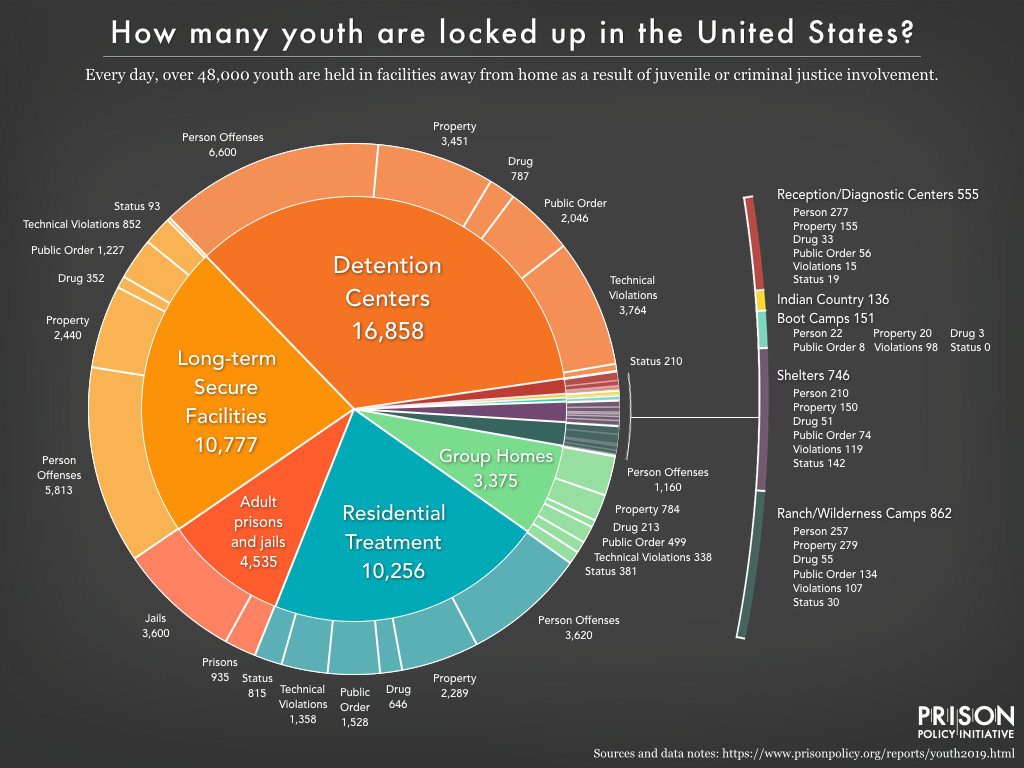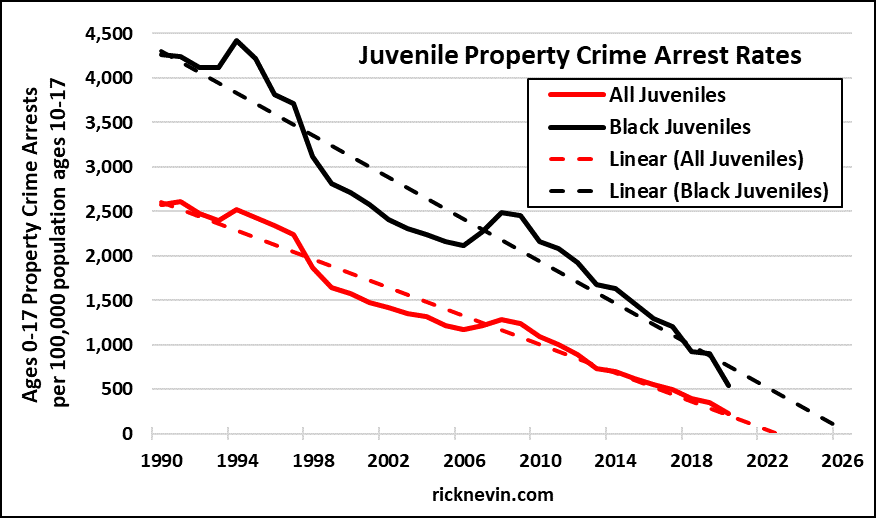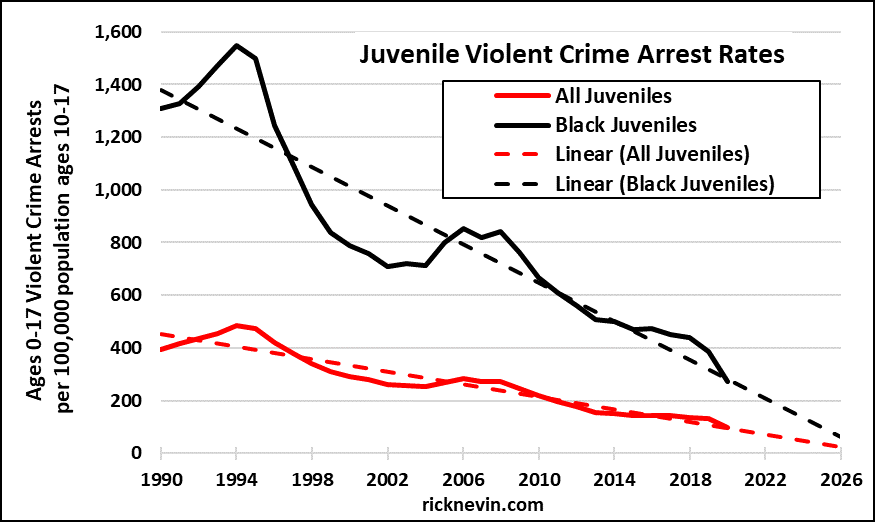Teen Felonies
Contents
- Teen Felonies
- Teen Felony Arrest Statistics and Data
- Juvenile Detention Centers
- Property Crimes and Other Frequent Teen Felonies
- Violent Teen Felony Offenses
- Female Teen Felony Offenders
- Teen Felony Prosecution and Sentencing
- Factors Impacting Teen Felony Trends
- FAQs on Juvenile Felony Crimes
- What is the current trend in juvenile offenders?
- What trends have resulted from the rates of juvenile crime over the past decade?
- Why have juvenile crimes increased in recent years?
- What do juvenile court statistics show about youth crime in the United States?
- What is the biggest contributing factor to juvenile delinquency?
- What are the statistics of youth violence?
- What is the biggest issue facing the juvenile justice system?
- What are the current factors for juvenile crime?
- What are current trends in the rates of juvenile delinquency globally?
- What is the most common youth crime?
- Are juveniles becoming more violent?
- What are the main causes of youth violence?
- Conclusion
Felony crimes are more serious criminal offenses that can lead to over a year in prison. When committed by minors under 18 years old, they are considered Juvenile Felony Charges. These crimes are prosecuted through the juvenile justice system or adult courts.
- Approximately 2.3 million teens were arrested in the U.S. in 2022, accounting for 17% of all arrests that year.
- 15% of violent crimes are committed by teens according to FBI crime data.
- Teen felony arrest rates peaked in the 1990s but have declined over the past decade.
- However, some offenses like DUI have increased sharply among teens.
Teen felons tend to face different penalties than adults including probation, juvenile detention, counseling requirements, and other alternatives to prison. But teen felonies can still carry serious consequences.
Prosecuting attorneys have discretion in trying minors as juveniles or adults. Factors like offense severity, criminal history, and age influence this decision. The juvenile system focuses more on rehabilitation than punishment.
Understanding teen felony trends, risk factors, and outcomes is key to developing effective interventions to deter youth crime. This outline will analyze statistics, cases, causes, and other teen felony details.
Let me know if you would like me to expand on any other sections or modify the introduction further.
Teen Felony Arrest Statistics and Data
In recent decades, rates of youth crime have decreased, yet public fear and political rhetoric over the issue remain contentious. High-profile cases such as Columbine and others compound this discourse, although underlying components such as child poverty, social inequality, and adolescent decision-making are often overlooked. This uneven balancing act between supporting young people and punishing criminals is a crucial part of the debate.
Teens account for a significant proportion of felony arrests each year. Examining this data reveals insights into teen crime trends.
- In 2020, over 424,000 felony arrests involved teens ages 13-17, comprising around 7.5% of all felony arrests that year, 71% less than the number of arrests in 2011.
- The peak age for violent teen felony arrests is 16-17. Over 58% of juvenile violent crime arrests in 2020 were ages 16-17.
- The most common felonies teens are charged with are:
- Larceny/theft – 33% of teen felony arrests
- Simple assault – 15%
- Drug abuse violations – 14%
- Disorderly conduct – 10%
- Robbery – 8%
- Teen felony arrest rates peaked in the mid-1990s and have declined over the past 10+ years. However, some crimes like motor vehicle theft continue to rise among teens.
- Male teens account for over 70% of juvenile felony arrests compared to female teens.
Juvenile Detention Centers
Juvenile detention is a practice that has come under increasing scrutiny in the United States. Studies have consistently shown that placing young people in such facilities is contrary to their well-being, and it does not promote public safety. Youth correctional centers can be intimidating places, similar in many ways to adult prisons. The majority of minors held in these institutions are detained for more than just one month, according to the Prison Policy Initiative.

Unsurprisingly, studies have found that jailed juveniles face numerous risks, including physical abuse, psychological trauma, and sexual assault. They also lack sufficient access to necessary educational resources. Further research has revealed that when they are released, they are more likely to struggle with educational attainment, relationships with family and friends, and securing gainful employment. All of this highlights why alternative forms of juvenile justice must be explored.
Property Crimes and Other Frequent Teen Felonies
While violent offenses gain more media attention, a majority of teen felonies are non-violent property and public order crimes.

According to 2020 FBI data, over 56% of juvenile felony arrests were for larceny theft, vandalism, motor vehicle theft, arson, and other property crimes. These offenses typically have higher reporting rates than violent crimes, contributing to their prominence in arrest statistics.
Some of the most prevalent teen felonies beyond property crimes include:
- Drug Abuse Violations – Marijuana accounts for over 80% of teen drug offense arrests. Possession of harder drugs like cocaine and heroin make up most other teen drug felonies.
- Disorderly Conduct – Disorderly conduct covers various public nuisance behaviors. 17% of teen felony arrests fall under this category.
- DUI – As mentioned earlier, drunk driving among teens has climbed over 90% since the 1990s. Underage DUI is a serious offense that can turn fatal.
- Weapons Offenses – Carrying unlicensed firearms or other prohibited weapons represent about 15% of teen felonies.
- Status Offenses – These involve minors breaking laws only due to their age, like truancy, running away, curfew violations, and underage drinking.
Understanding the most prevalent teen offenses can help shape juvenile justice policies and youth outreach programs. For less serious crimes, diversion programs may provide better outcomes over prosecution and detention.
Violent Teen Felony Offenses
While less common than property crimes, violent felonies make up over 10% of teen arrests. Violence involving teens can have tragic and lasting consequences. Understanding trends in juvenile violent offenses is key to prevention.

Violent teen felonies typically lead to more severe punishments than non-violent crimes. Conviction rates for violent felonies are around 60% for juveniles arrested. Teens tried as adults for violent crimes can face years in prison. Even as juveniles, violent felons often face detention facility placement and probation.
According to FBI crime reports, in 2020 there were around 850 homicide arrests involving teens under 18. This represents about 8% of all murder arrests. Of juveniles killed by violence annually, 40% are under age 5. – fbi.gov
Firearms are used in approximately half of teen violent felony crimes. Easy access to guns elevates the severity and lethality of youth violence. Strong gun control measures aimed at teens could potentially reduce violent teen felonies.
More research is needed into the motivating factors behind violent juvenile offenses. By understanding root causes like trauma, abuse, and mental illness, steps can be taken to steer teens towards positive interventions over felonious violence.
Let me know if you would like me to expand or modify this section further. I aimed to provide an overview of statistics and trends related to violent teen felonies and highlight the need for preventative solutions.
Female Teen Felony Offenders
While the majority of teen felons are male, female juvenile offenses are on the rise. Between 1980 and 2020, felony arrests of teen girls increased by over 80%.
Key statistics on female teen felons:
- Girls account for 30% of all juvenile arrests for violent crimes.
- Arrests of teen girls for assault increased by 65% between 1980-2020.
- As noted earlier, drunk driving arrests among female teens rose 93% between 1993-2002, compared to 25% for males.
- Theft and larceny make up over 40% of female teen felonies, more than any other offense.
- Black female teens have the highest felony arrest rates among demographic groups.
Possible factors contributing to growing female teen crime include:
- Childhood trauma from abuse or dysfunctional homes.
- Mental health issues like depression and anxiety.
- Pressure from older boyfriends or gang involvement.
- Rebellion against societal expectations.
- Economic motivations and poverty.
Further research is warranted into the drivers behind surging female teen felonies and tailored early interventions targeting at-risk girls. Mentorship programs, counseling, education assistance, and family support are some potential solutions.
Teen Felony Prosecution and Sentencing
Most teen felons under 18 are processed through the juvenile justice system rather than criminal courts. But prosecution methods vary case by case.
- An estimated 60-80% of felony arrests lead to prosecution in juvenile court rather than outright release.
- Teens age 15 and older accused of serious violent felonies like murder, rape, and robbery have the highest rates of being tried as adults.
- If convicted as juveniles, the most common sentences are probation (60%) and residential placement (30%). Only about 10% result in detention facility commitment.
- Teens convicted as adults face standard criminal penalties like prison, probation, and fines.
- Recidivism rates within 3 years average 55% for teen felons, whether processed as a juvenile or adult.
- Felony convictions can limit future education and employment opportunities for teens.
Best practices emphasize tailored rehabilitation over punitive sentences for teens. Net-widening from overly zealous prosecution has diminished in favor of diversion programs. But serious or repeat teen felons may still face incarceration when proven truly dangerous. The goal is to balance accountability, consequences, and public safety with the welfare of young offenders.
Factors Impacting Teen Felony Trends
Teen crime rates don’t occur in a vacuum. Various societal forces and conditions interact to influence juvenile felonies.
- Demographics – The US teen population size affects overall offense totals. Cultural shifts also impact norms.
- Economics – Poverty, lack of opportunity, and materialism help motivate some financially driven teen felonies.
- Education – High truancy and low academic achievement are risk factors for delinquency.
- Family Environment – Abusive, dysfunctional, or unstable homes often contribute to teen behavioral problems.
- Mental Health – A large percentage of teen felons exhibit psychological issues like depression, anxiety, PTSD and more.
- Criminogenic Social Networks – Association with delinquent peer groups is one of the top predictors of youth felonies.
- Law Enforcement – Changes in policing strategies and reporting affect arrest statistics.
- Drug Trends – Waves of teen substance abuse produce spikes in related offenses.
- Media Violence – Some studies correlate exposure to violence in media with aggression in youth.
- Biology – Developmental factors like neurocognition, hormones, and brain development may contribute to teen criminal propensity.
FAQs on Juvenile Felony Crimes
What is the current trend in juvenile offenders?
Juvenile crime has been increasing steadily over the past decade, with the latest statistics available showing a 5% rise from 2020 to 2023. The biggest contributing factor to this trend is socio-economic inequality; youths from lower socio-economic backgrounds are more likely to commit crimes due to limited access to educational opportunities, poverty, and discrimination.
What trends have resulted from the rates of juvenile crime over the past decade?
Over the past decade, we have seen an increase in youth violence, particularly in inner cities or areas of high poverty. The most common youth crime is theft, followed by assault and drug use. In addition, there has been an increase in cybercrimes and hate crimes among juveniles.
Why have juvenile crimes increased in recent years?
Juvenile crime has increased due to a variety of factors, such as poverty, lack of education, substance abuse, and broken homes – all of which can lead to feelings of hopelessness and alienation that can contribute to delinquent behavior. In addition, social media and other forms of technology can be a powerful tool for both good and bad; it can lead to increased communication but also provide access to negative influences, such as illegal activities and cyberbullying.
What do juvenile court statistics show about youth crime in the United States?
According to the latest available numbers from the federal government’s Office of Juvenile Justice and Delinquency Prevention (OJJDP), over two million juveniles were arrested in 2018 alone – up 14% from 2017. The majority of these arrests were for larceny-theft (29%), simple assault (18%), and drug abuse (12%).
What is the biggest contributing factor to juvenile delinquency?
There is no one single cause for juvenile delinquency; rather, it is a combination of risk factors that can lead to criminal activity. Examples include persistent poverty, inadequate education and job opportunities, family issues such as divorce or abuse, peer pressure, drug/alcohol use, mental health issues, and exposure to violence or gangs.
What are the statistics of youth violence?
Youth violence is on the rise in many countries across the globe, with some estimates indicating that it has increased by nearly 50% since 2000. In the United States, specific statistics vary according to location but overall reports indicate that violent crimes committed by youths increased between 1997-2012 before dropping off again in subsequent years.
What is the biggest issue facing the juvenile justice system?
One of the biggest issues facing the juvenile justice system is its focus on punishment instead of prevention and rehabilitation. Too often the goal of punishment supersedes attempts at meaningful reform, leading to harsh penalties for young people without any real effort to address the underlying causes of their behavior.
What are the current factors for juvenile crime?
The primary factors associated with juvenile crime include poverty, inadequate education and job opportunities, family issues such as divorce or abuse, peer pressure, drug/alcohol use, mental health issues, and exposure to violence or gangs. It is important to note that many interventions – such as providing more opportunities for education, employment, and recreation – have been shown to be effective in reducing juvenile crime rates.
What are current trends in the rates of juvenile delinquency globally?
While there is variation across different countries, international studies indicate that overall rates of juvenile delinquency are higher within developed countries than less developed ones. Moreover, evidence suggests that reductions in poverty levels and increases in educational opportunities can result in significant decreases in juvenile delinquency rates.
What is the most common youth crime?
Theft is generally considered the most common kind of youth crime worldwide, with larceny-theft accounting for around 30% of arrests among younger individuals in the United States in 2018 according to OJJDP data. After theft comes simple assault (18%), drug abuse (12%) and disorderly conduct (11%).
Are juveniles becoming more violent?
Youth violence appears to be on the rise globally, although there is some variation by country and region – certain parts of Europe appear to be faring better than elsewhere when it comes to curbing youth violence. While it’s difficult to pinpoint the exact reasons for the increase, experts believe that inadequate economic opportunities may be one contributing factor due to youths’ frustration with their life circumstances. Other possible causes include easy access to firearms and gang involvement.
What are the main causes of youth violence?
The main causes of youth violence are complex and multi-faceted; however, some common themes include poverty, trauma/adverse childhood experiences, substance abuse/misuse, inadequate education/job prospects, and access to firearms/violent media content. It is essential that a comprehensive approach is taken to address youth violence by identifying risk factors and intervening early before criminal behavior escalates.
Conclusion
In reviewing the statistics, causes, and characteristics of teen felonies, several key takeaways emerge:
- Property crimes like theft and vandalism make up the bulk of teen felonies, followed by drug offenses, disorderly conduct, and assault.
- Violent teen crimes grab headlines but comprise a smaller percentage of juvenile felonies. Still, their harms necessitate preventative focus.
- Arrest data provides insights but doesn’t capture unreported crimes and omits relevant contextual factors behind offenses.
- Female juveniles are entering the justice system for felonies at increasing rates, especially for assaults and DUIs.
- Most teen felons are tried in juvenile courts, with the toughest sentences reserved for violent crimes or serious repeat offenders.
- Myriad socioeconomic and developmental factors contribute to delinquency among high-risk youth.
Overall, the goal of any teen felony policy should be balancing accountability with rehabilitation based on the welfare and context of each individual minor. Preventing crimes before they occur through education, family interventions, and addressing systemic gaps will help young people avoid the pitfalls of felonious mistakes that hamper their futures. A thoughtful criminal justice approach combined with social support provides the best avenue for reform.





I recently came across a case study involving a teenager who committed a felony crime. This particular case involved a 17-year-old boy who was charged with armed robbery. The teenager, let’s call him Alex, was part of a gang and had been involved in several criminal activities in the past.
One evening, Alex and his gang members decided to rob a convenience store at gunpoint. They entered the store, threatened the cashier, and stole a significant amount of cash and merchandise. However, their actions were captured on the store’s surveillance cameras, which played a crucial role in identifying and apprehending them.
Once arrested, Alex was charged with armed robbery, a felony offense that carries severe penalties, including a potential prison sentence of over a year. The case went to trial, and the evidence against Alex was overwhelming. He was found guilty and sentenced to three years in a juvenile detention center.
This case highlights the serious consequences that can result from teen felonies. Not only did Alex’s actions harm the